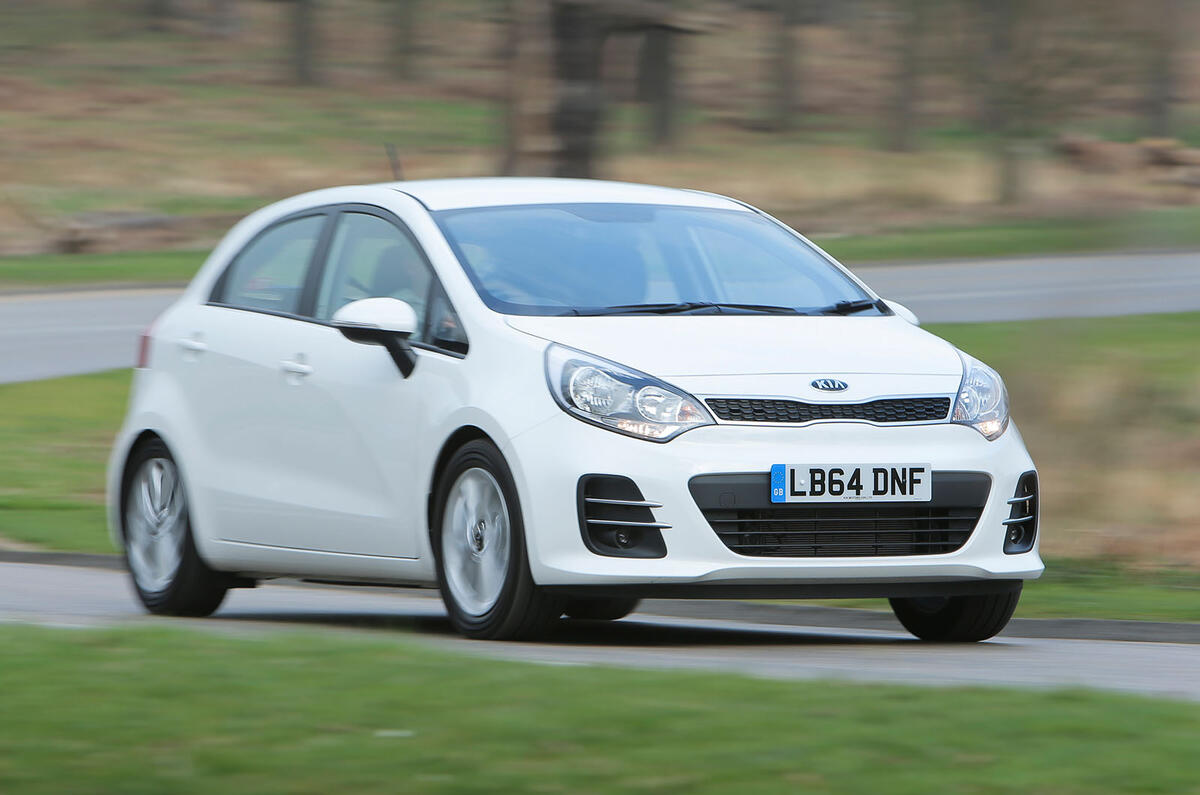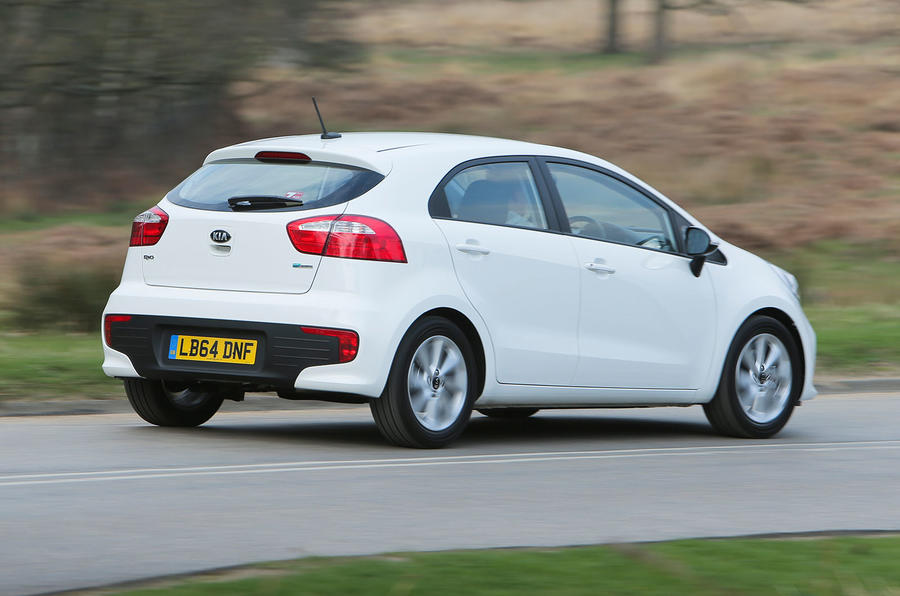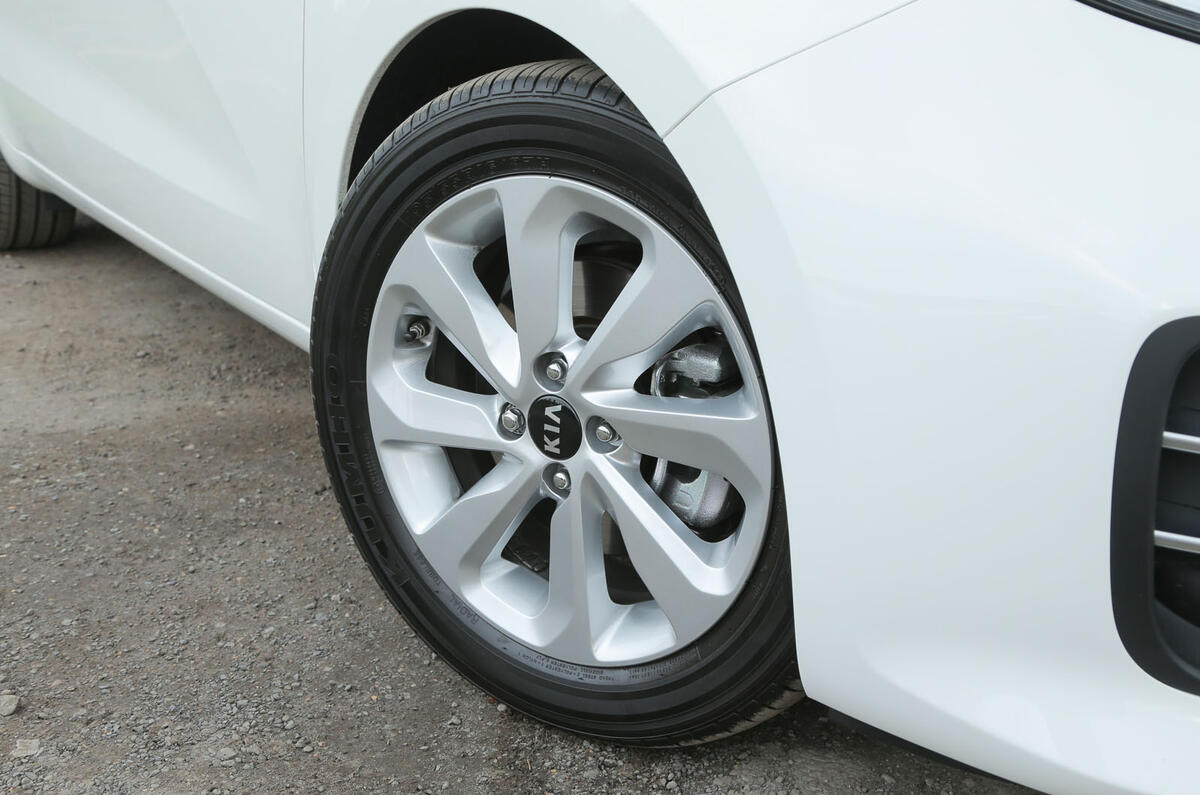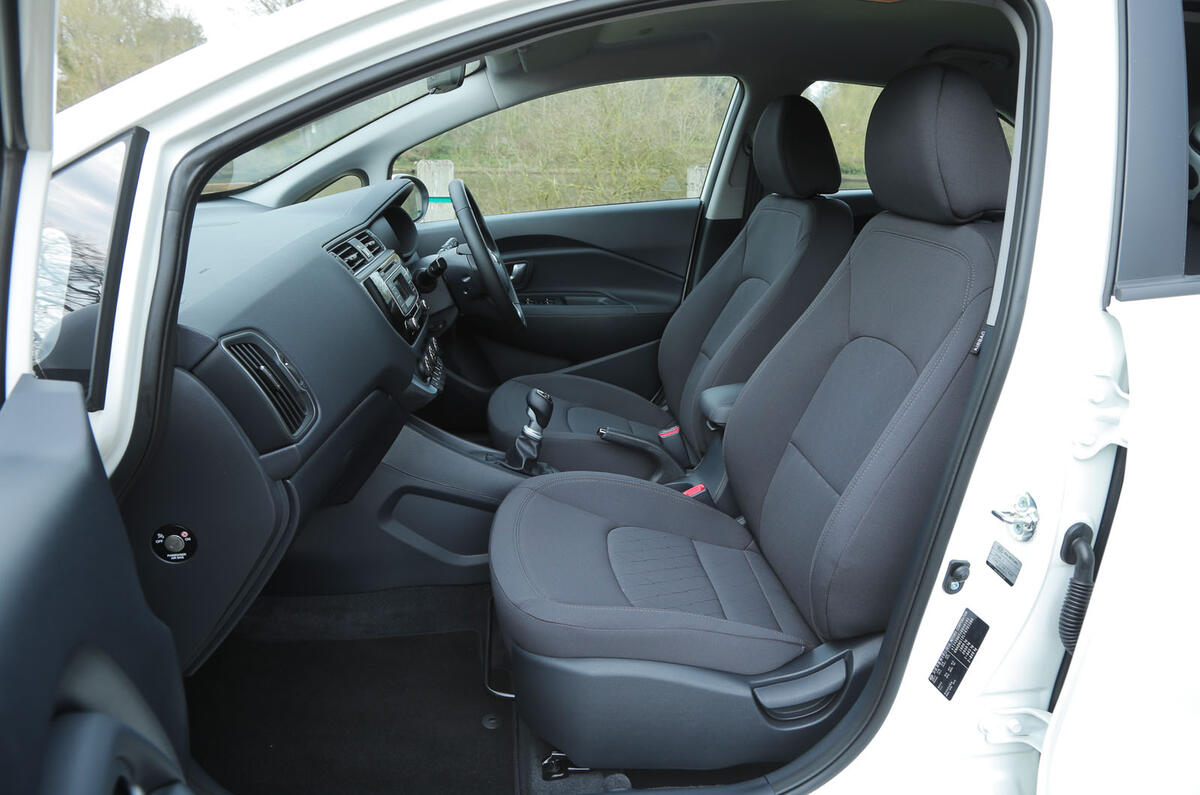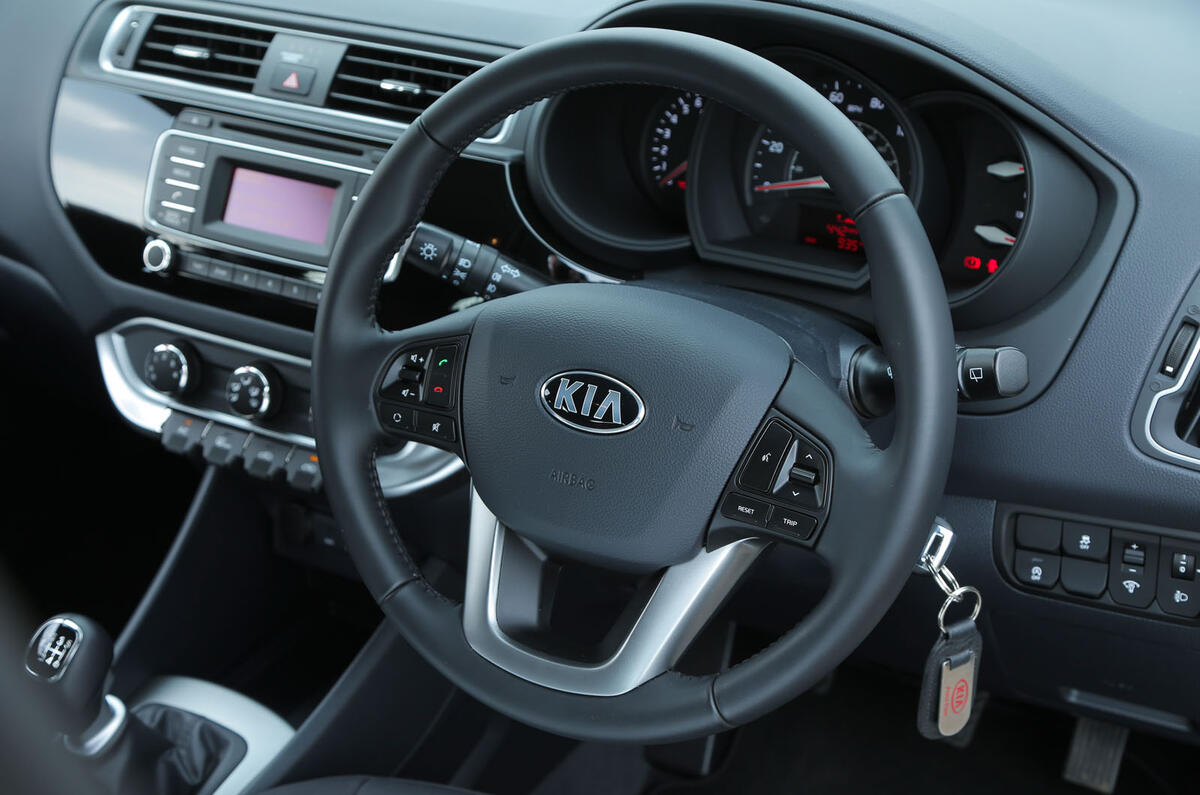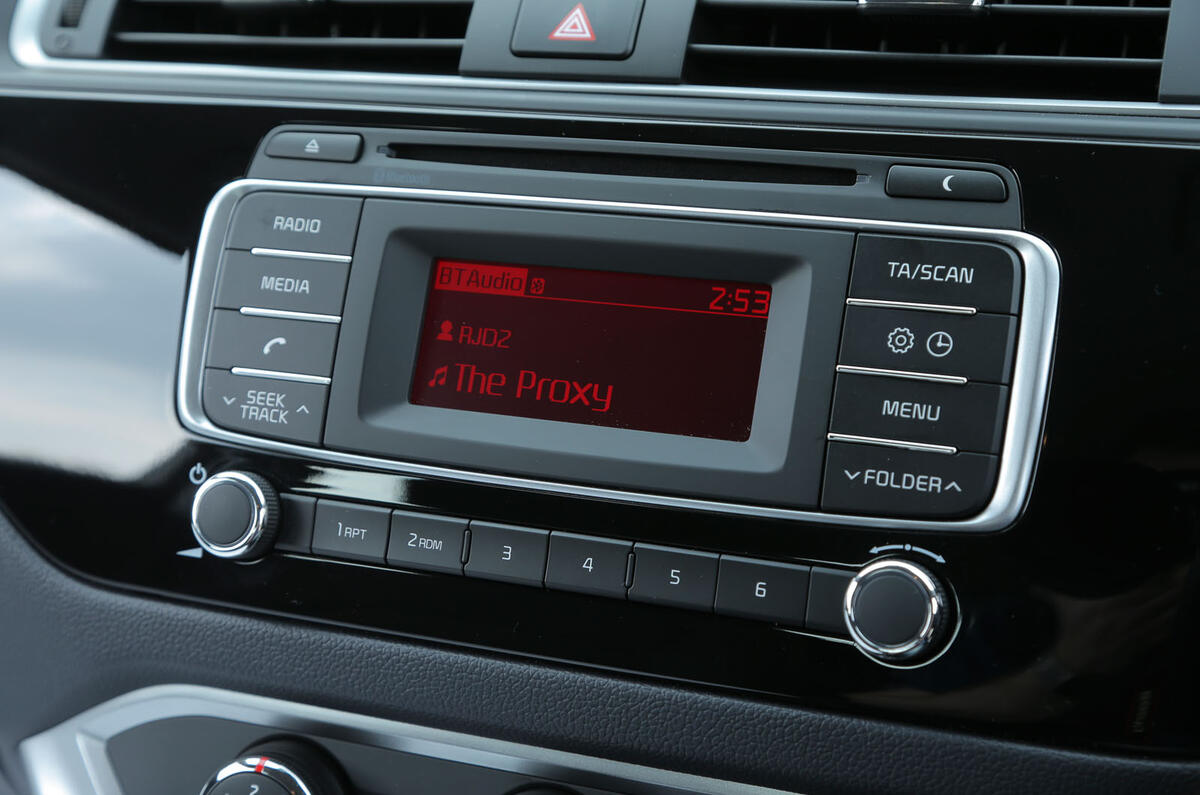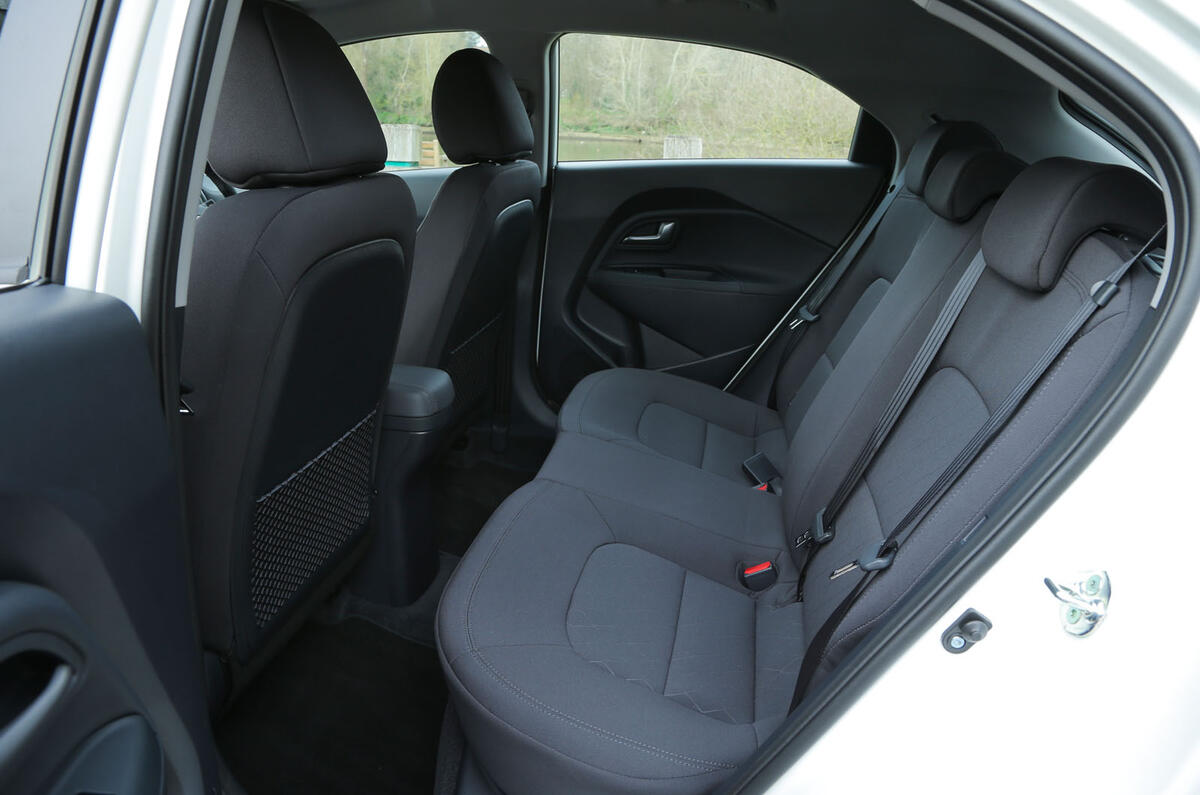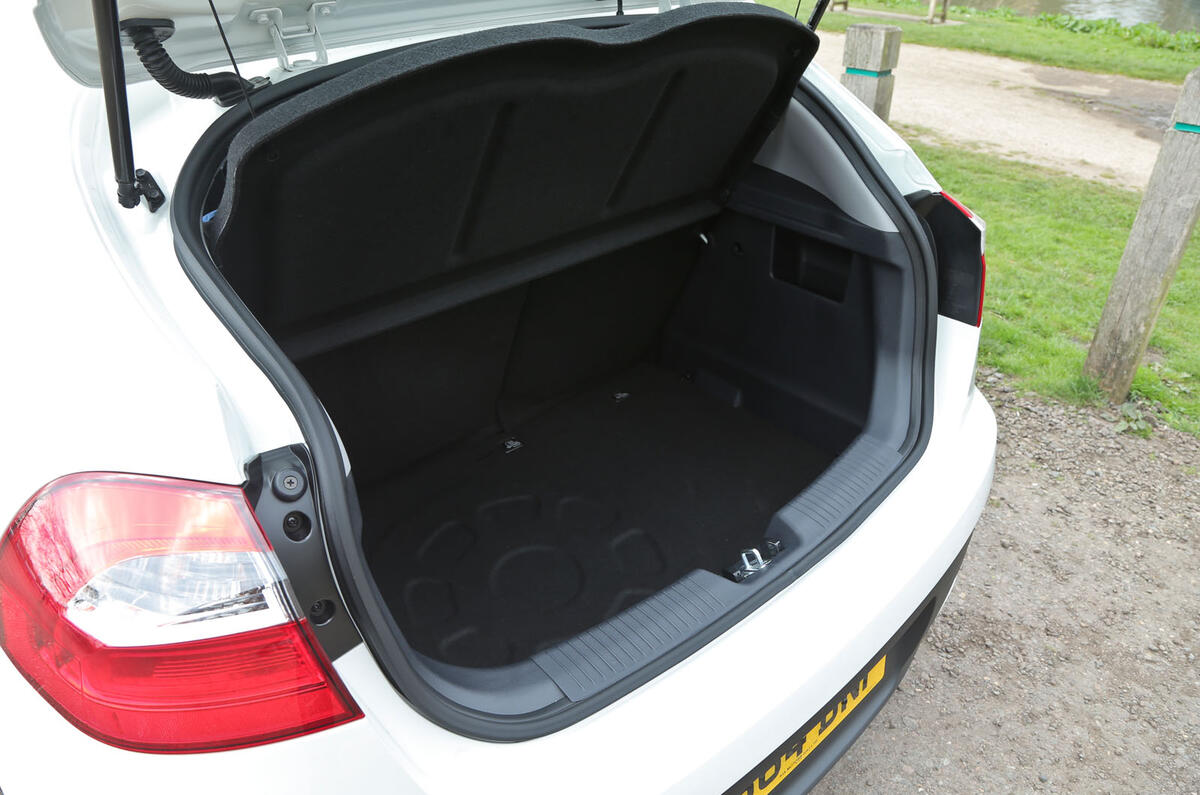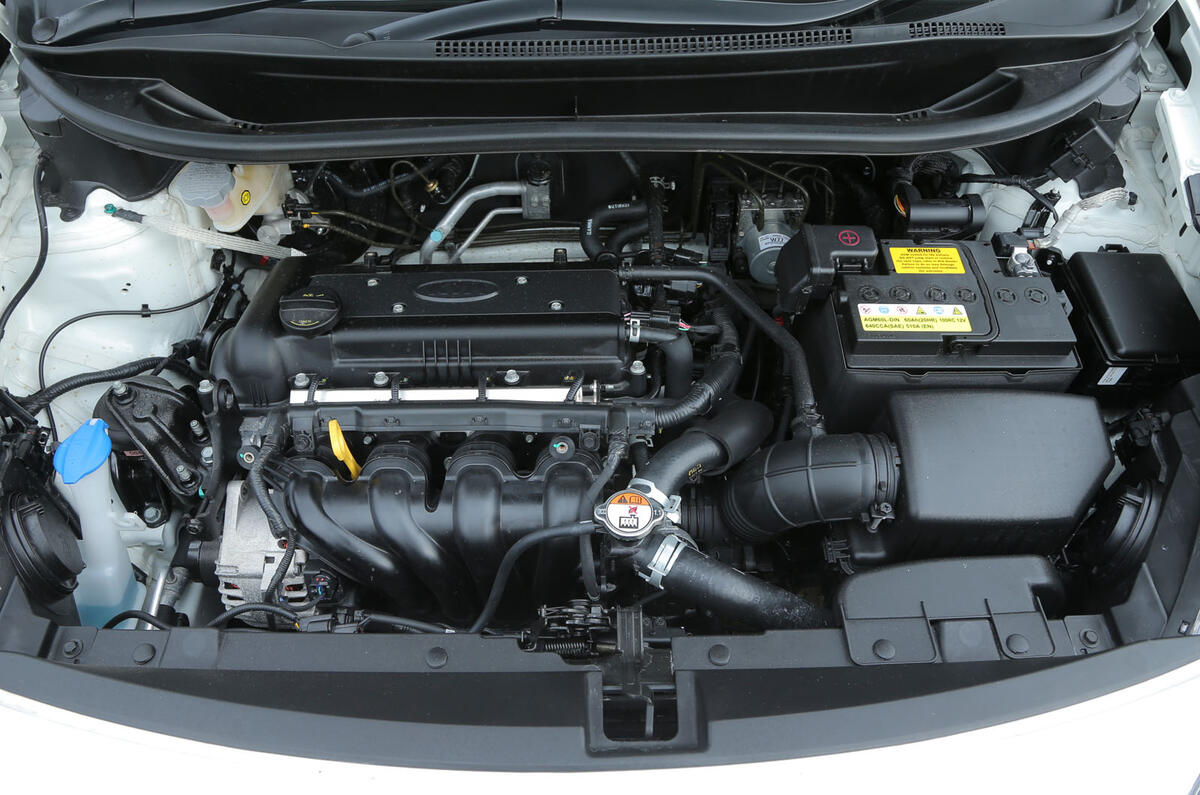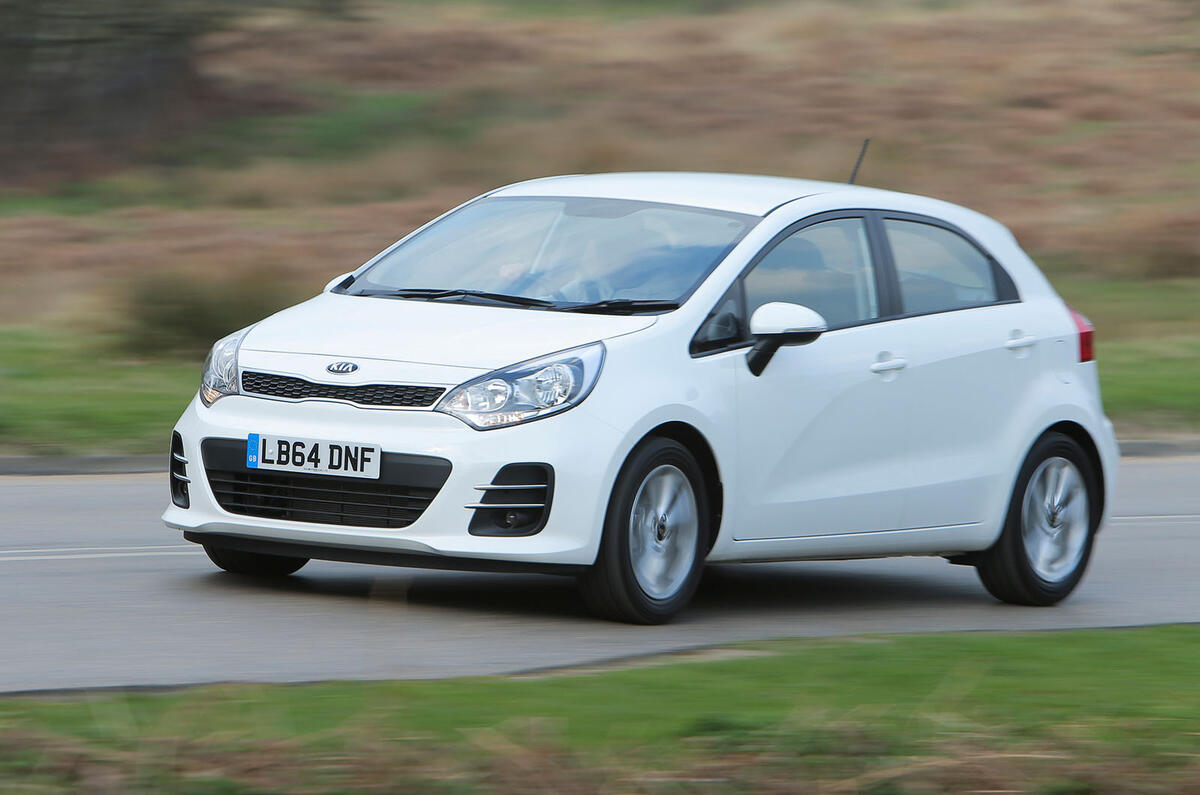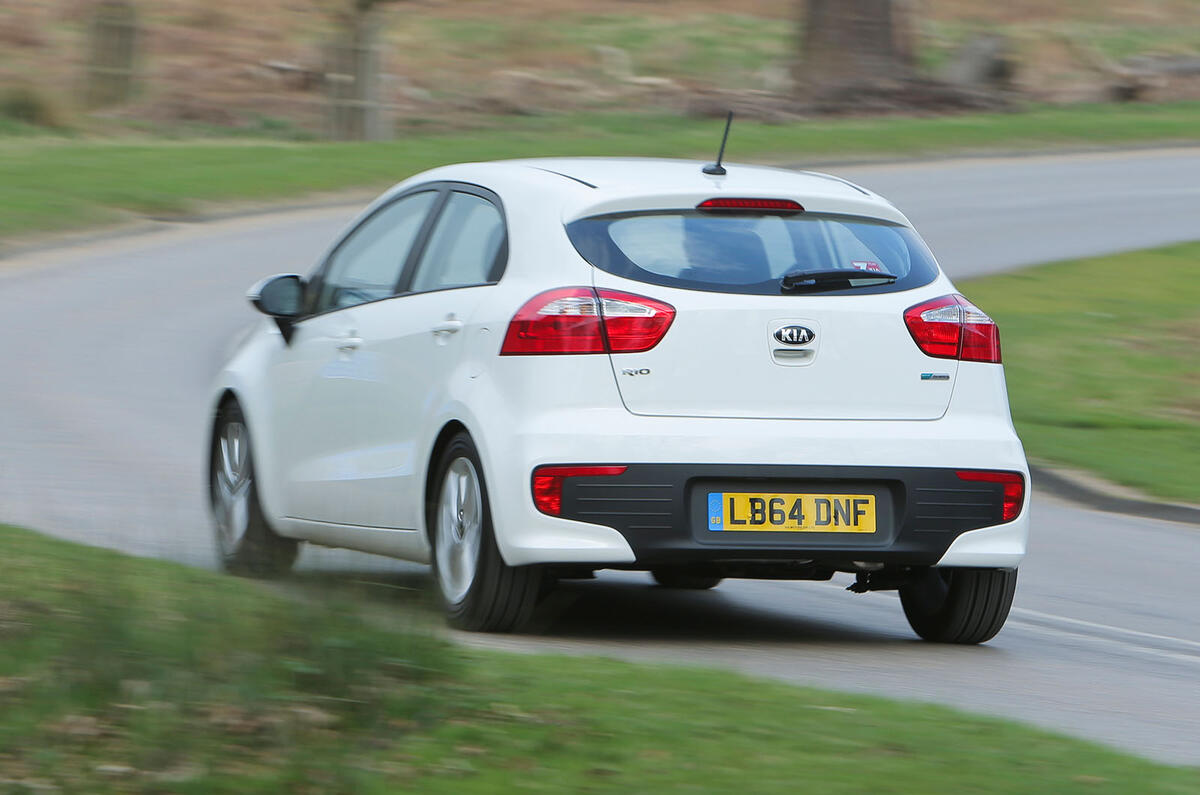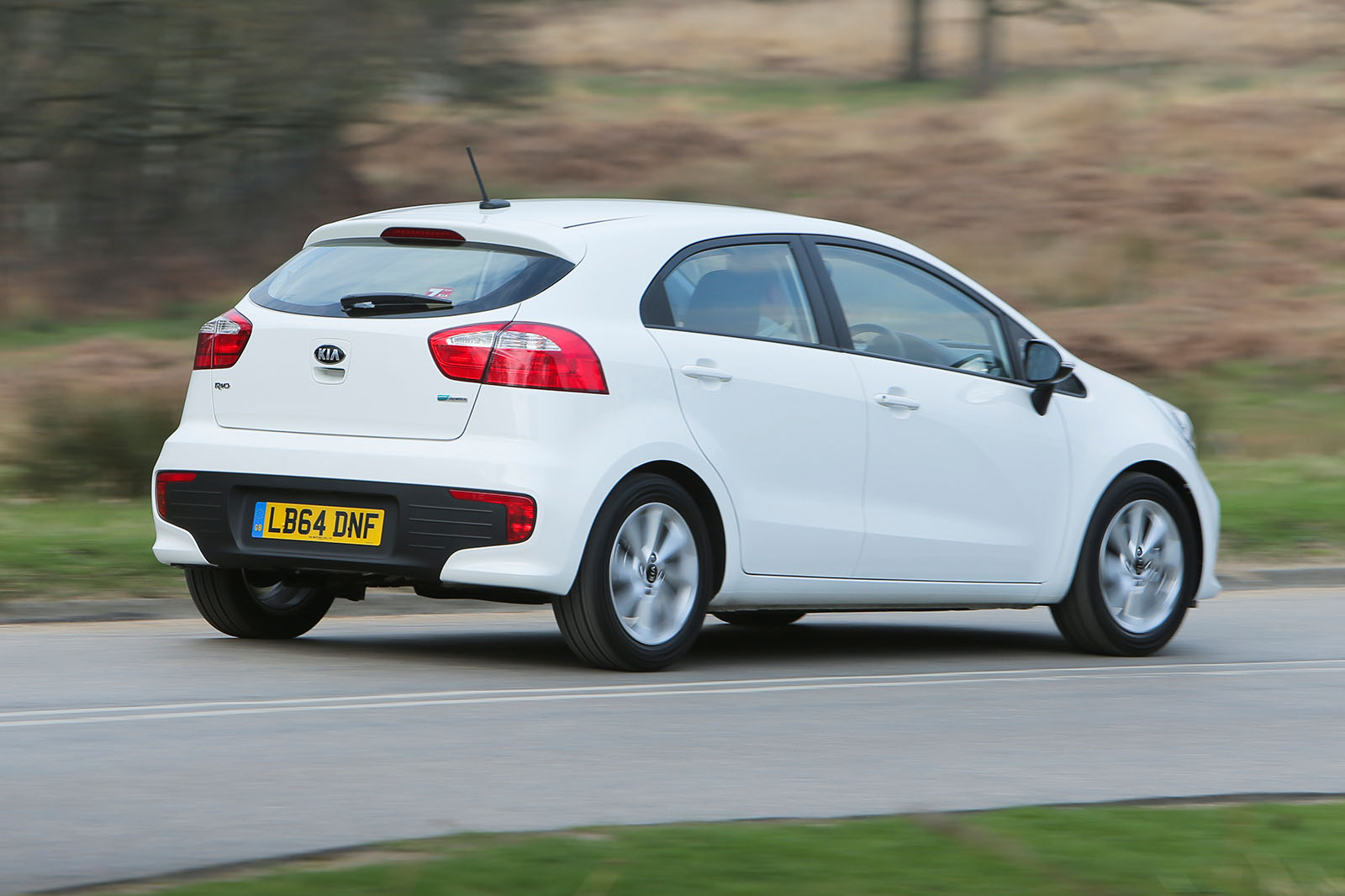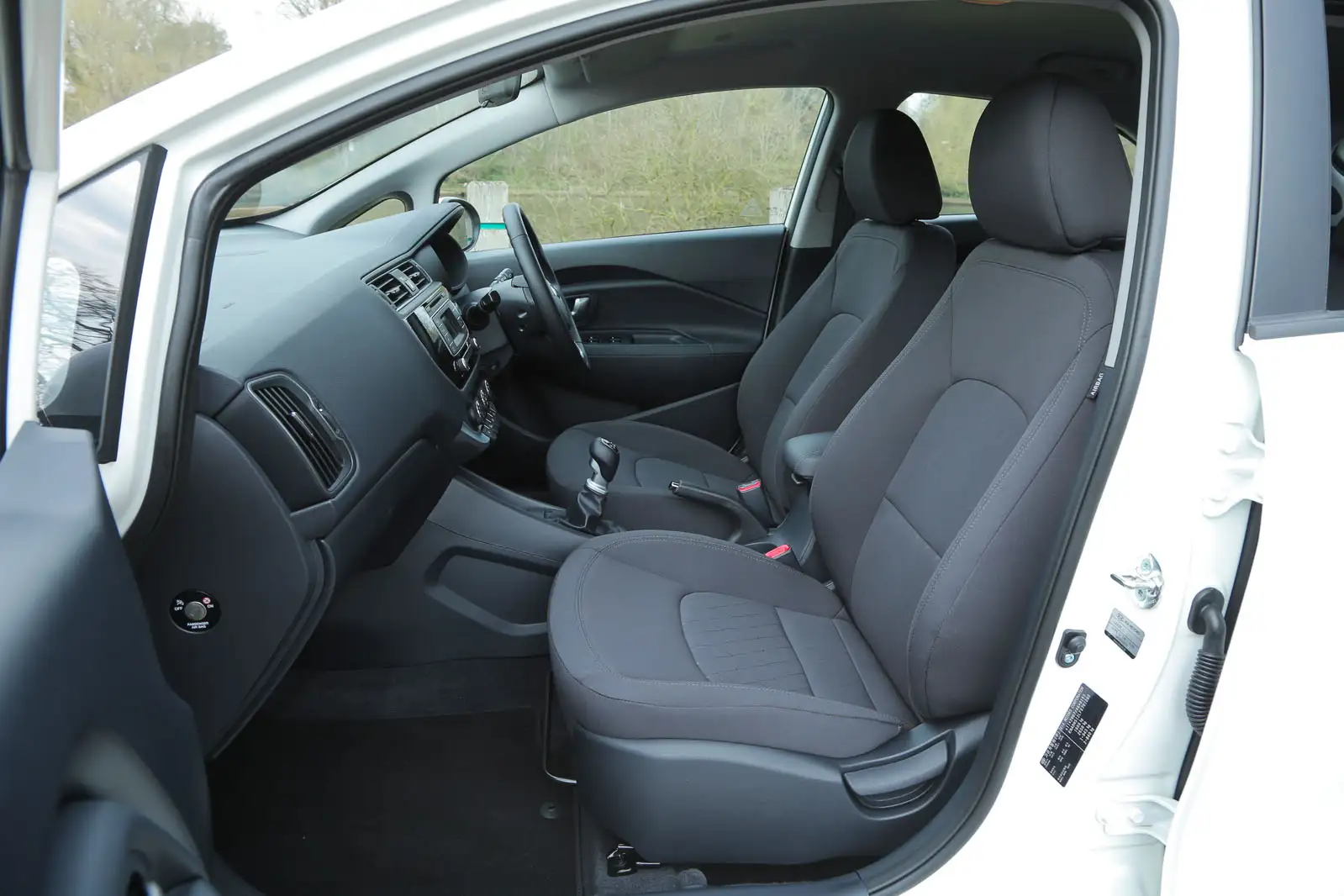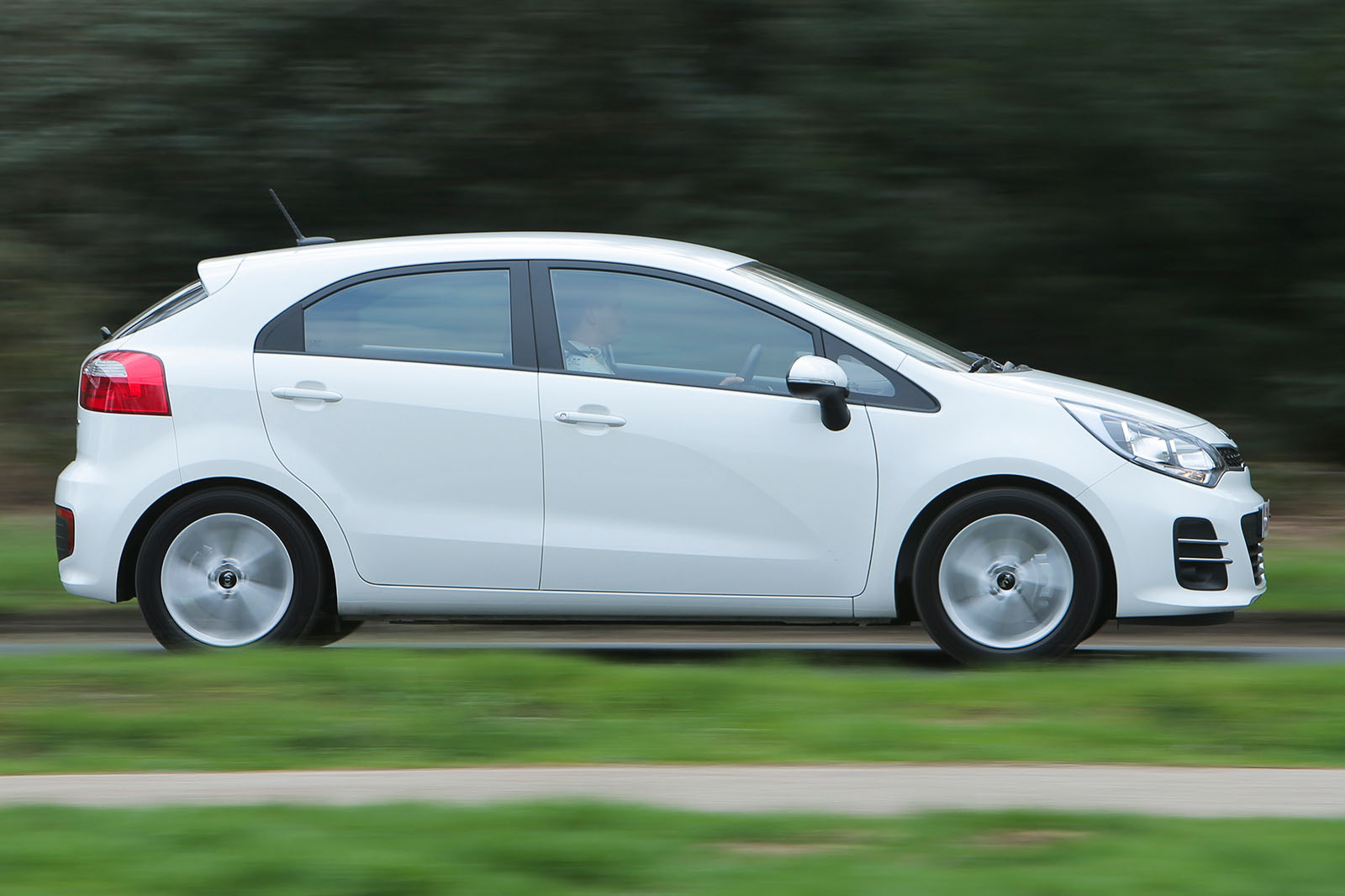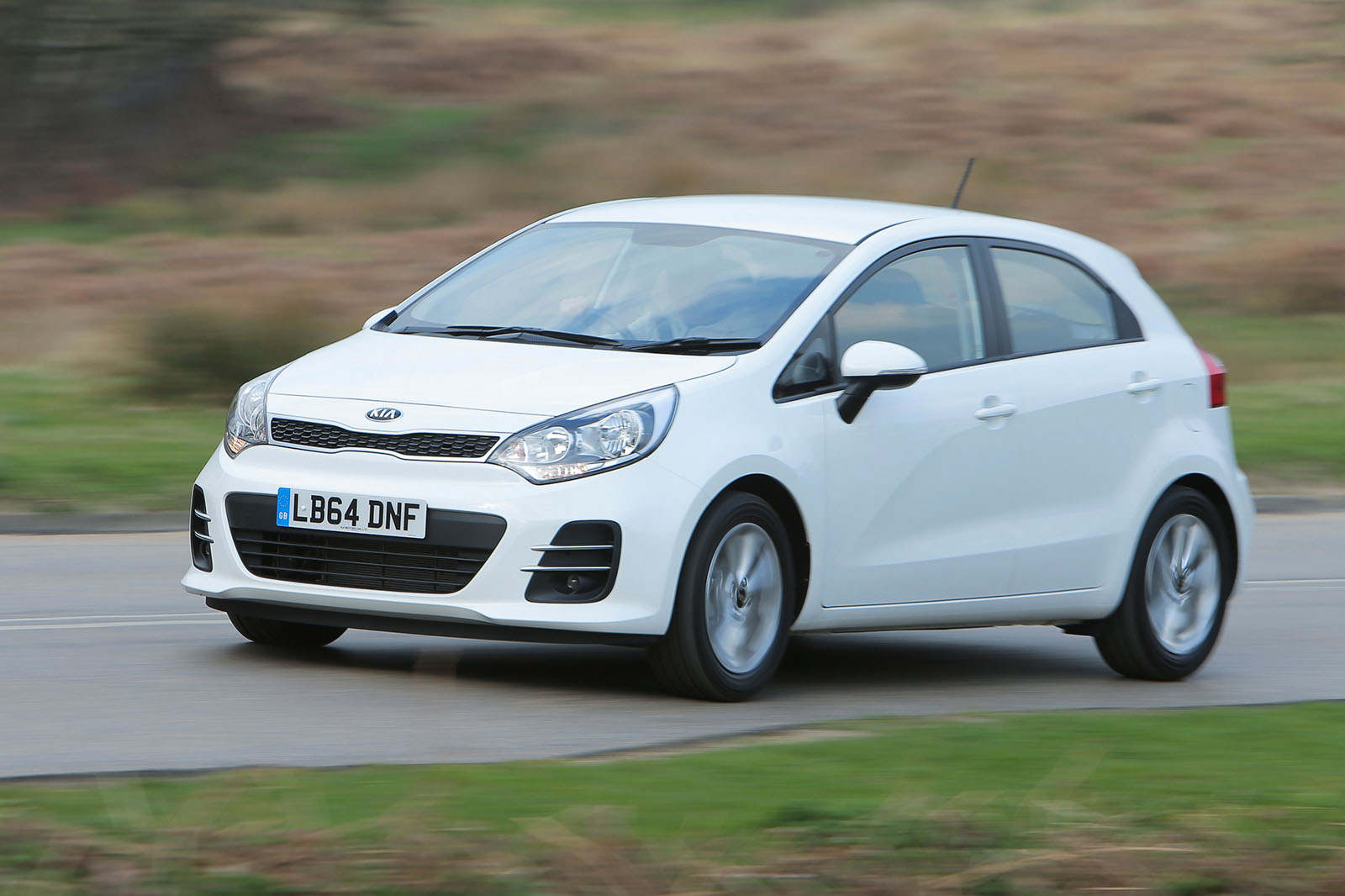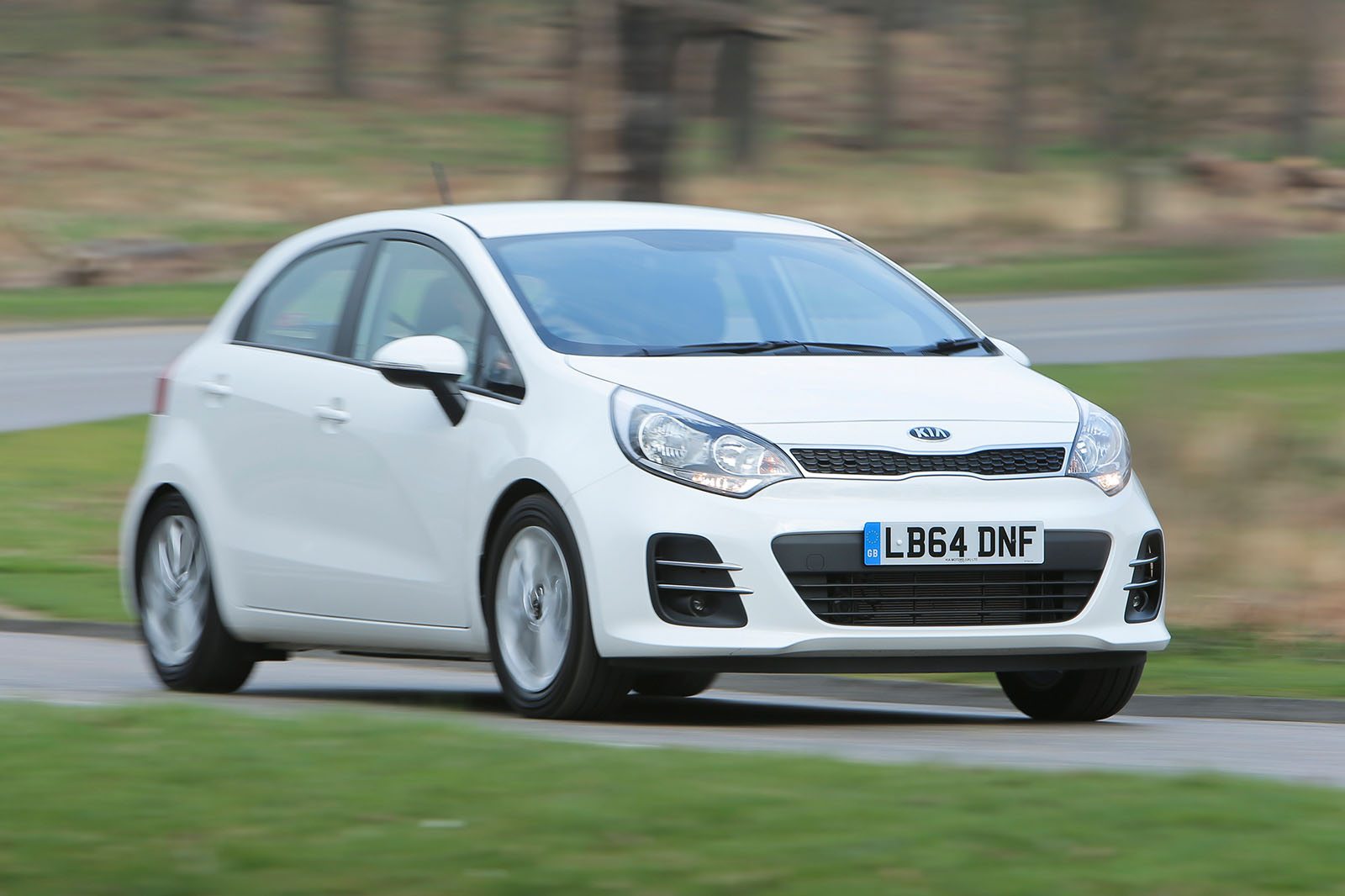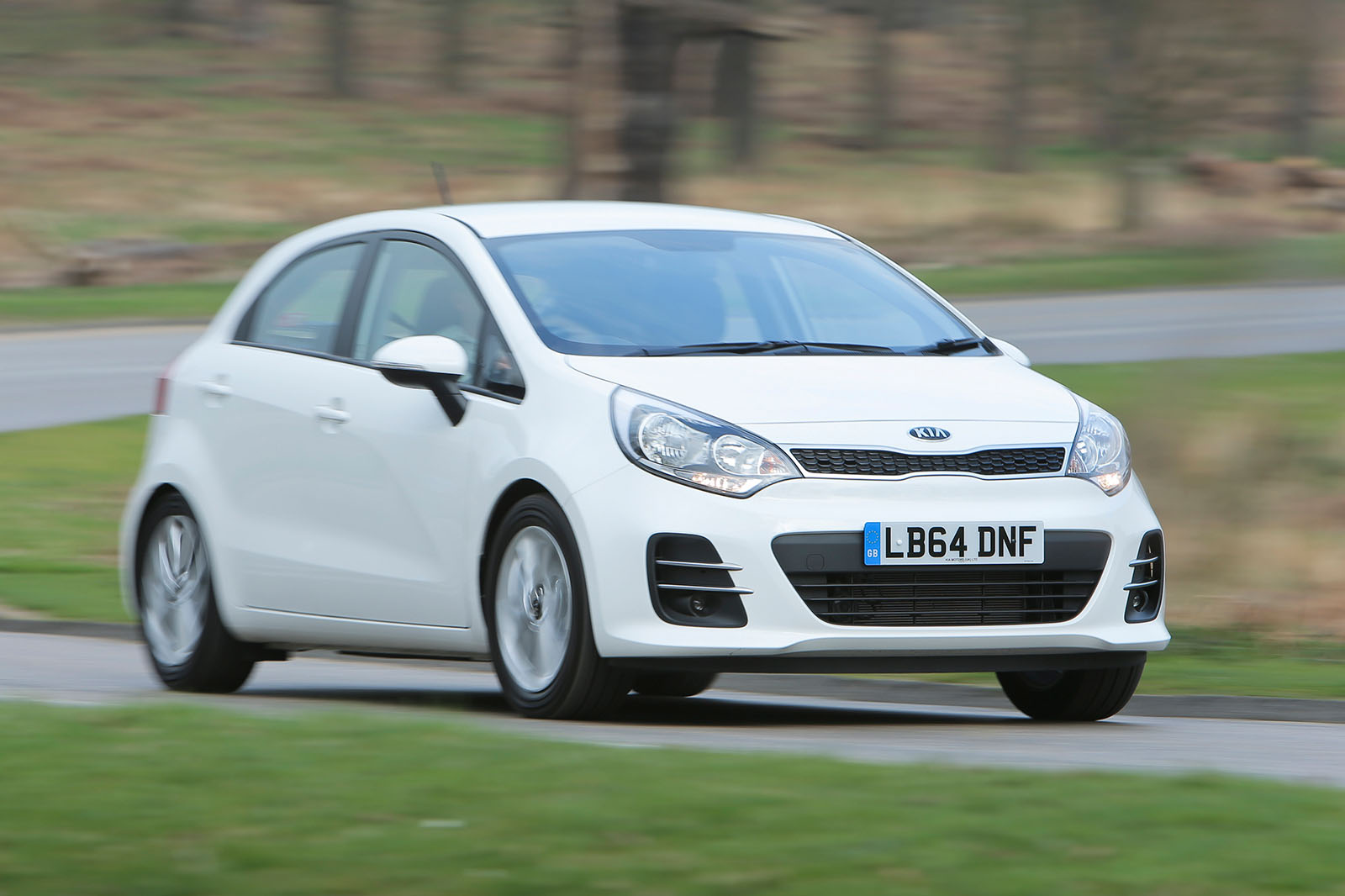The interior is one of the areas where Kia has made the greatest strides recently. A couple of model generations ago, a Kia’s cabin really was a low-rent place. Today, it is not. But the Rio does still trail the class best when it comes to the perceived quality of one or two materials, even if we’ve little doubt that it’s screwed together as well as any of its peers.
There are some nice touches, all the same. The row of ancillary switches beneath the well-sized ventilation controls look and feel good, but the expanse of dark, featureless plastic on the dashboard lacks the tactile quality of, say, a Ford Fiesta's or Volkwagen Volkswagen Polo’s interior materials. At least the steering wheel is well-shaped and inoffensively designed, lacking the fearsome, gurning grin of the Kia Picanto’s.
All told, though, the Rio’s cabin is functional and largely ergonomically sound. In places it displays thoughtful design, too. There are not one but two 12v power sockets on the dashboard and a moulded insert to prevent a phone from sliding around (although a grippy rubber insert would be classier). It’s also well-equipped, given its price.
The cabin is spacious, too. The Rio is easily, noticeably bigger than its predecessor inside, and among the supermini class’s most practical acts. Not only is the wheelbase longer and the car wider than it was, but the base of the windscreen also sits 156mm closer to the front of the car than before, creating an airier ambience.
Pleasingly, the driver’s seat adjusts for height – still not quite the norm at this price – and the steering wheel widely for reach and rake in all but entry-level diesel form. All of our testers easily found a comfortable driving position. Despite the car’s lower overall height, headroom is generous enough; Kia claims that it’s up by 8mm.
Rear accommodation is as good as you’d reasonably expect from a supermini. Kids will not complain; two tall adults might, but no more than they would in any ‘sub-compact’ hatch. The boot? It’s bigger than before, too, and at 288 litres it’s competitive. Those folding rear seats split 60/40.
Equipment levels are good rather than great, with six trims to choose from - 1, 1 Air, SR7, 2, 3 and 4. The entry level models come with front electric windows, electrically adjustable wing mirrors, USB and Bluetooth connectivity and hill start assist as standard, while upgrading to 1 Air adds air conditioning to the package. The SR7 trimmed models adorns the Rio with 15in alloy wheels, rear parking sensors, a cooled glovebox, privacy glass and automatic headlights.
The mid-range Rio '2' omits some of the nicer features on the SR7 including the parking sensors, privacy glass and automatic headlights, but adds 16in alloys, front foglights and folding door mirrors, while the 3 adds luxuries such as 17in alloys, rear parking sensors, automatic headlights and wipers, climate control, heated front seats and cruise control. There is also the inclusion of Kia's 7.0in touchscreen infotainment system complete with sat nav and reversing camera.
Opting for the range-topping Rio 4, you will find a sunroof, leather upholstery, heated steering wheel, and keyless entry and start fitted as standard.


